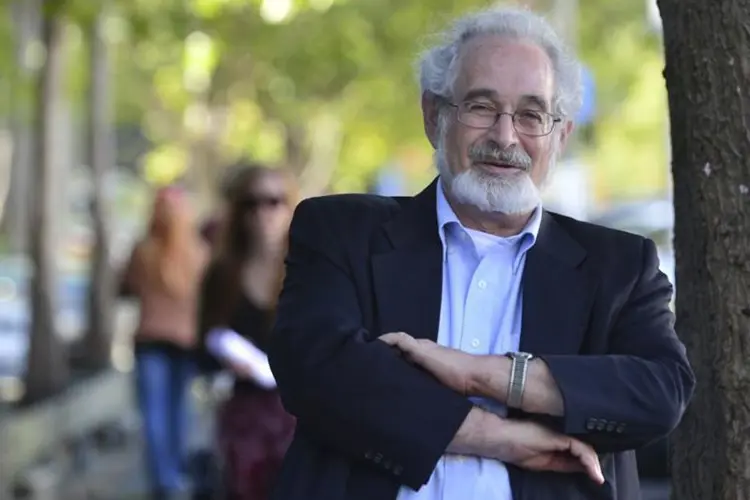A study claiming that vaping increases the chance of having a heart attack has been retracted by the Journal of the American Heart Association after nearly a year. The retracted paper was co-authored by Stanton Glantz, the University of California-San Francisco medical professor who runs that school’s Center for Tobacco Research Control and Education. He oversees a five-year, $20 million federal grant as principal investigator at the center.
Glantz is best known for his decades-long battle against smoking and the tobacco industry. He has also fought to restrict and ban vaping for a decade, and has written some of the most famous and most regularly debunked papers on e-cigarettes during that time.
The retracted study, co-authored by Glantz and epidemiologist Dharma Bhatta, was published last June. Using data from the FDA’s Population Assessment of Tobacco and Health (PATH) survey, the authors claimed to show that vaping was associated with an increased risk of a later heart attack. They also claimed that “dual use” (using both cigarettes and vapes) was even more dangerous than just smoking.
“Former, some-day, and every-day combustible cigarette smoking is also independently associated with myocardial infarction among adults in the United States,” Glantz and Bhatta wrote. “Dual use of the e-cigarette and combustible cigarettes results in higher risk of myocardial infarction than using either product alone and switching from cigarettes to e-cigarettes was not associated with any benefits in terms of reduced myocardial infarction risk.
“E-cigarettes,” they added, “should not be promoted or prescribed as a less risky alternative to combustible cigarettes and should not be recommended for smoking cessation among people with or at risk of myocardial infarction.”
Glantz had co-authored a study with three medical students the year before that made a similar claim. It shouldn’t be a surprise to anyone that vapers (almost all of whom are ex-smokers) would be at higher risk for heart attacks than the general population. And that’s what, at best, Glantz’ previous study had shown. You could easily prove the same association with heart attacks and high blood pressure medicine: more heart attack victims use it. But it doesn’t cause their heart attacks.
However, the 2019 study was different. Glantz and Bhatta were specifically saying that vaping caused the heart attacks, that some of the people in the data set had vaped and then had heart attacks because of it. The claim caught the attention of University of Louisville researcher Brad Rodu, a longtime proponent of tobacco harm reduction through snus and vaping—and a regular critic of Glantz.
When Rodu reviewed the data and duplicated the authors’ calculations, he discovered that a majority of the victims had actually suffered their heart attacks before they began vaping. In fact, they had heart attacks on average 10 years before trying e-cigarettes!
Rodu found that, once the patients whose heart attacks had occurred before they had vaped were removed from the data analysis, the association between vaping and heart attacks disappeared. What link remained was hopelessly confused by the heart attack victims’ smoking history. It seemed unbelievable that such an obvious error was an honest mistake.
Rodu and University of Louisville economist Nantaporn Plurphanswat contacted the journal editors and explained the problem. “The main findings from the Bhatta-Glantz study are false and invalid,” they wrote. “Their analysis was an indefensible breach of any reasonable standard for research on association or causation. We urge you to take appropriate action on this article, including retraction.”
A week later Rodu and Plurphanswat wrote a second letter to the journal, alerting the editors to further problems. A secondary analysis, they wrote, was “evidence that Bhatta and Glantz knew that many current e-cigarette users had a heart attack before they started vaping.”
On Jan. 20, a group of well-known academics in the field wrote to the journal, reiterating Rodu’s complaints, and questioning the journal’s apparent decision to ignore them. The authors of the letter included David Abrams, Kenneth Warner, Ann McNeill, Peter Hajek, and Konstantinos Farsalinos—all serious scientists whose concerns could not be brushed aside.
After a somewhat dismissive response from the journal, a second letter was sent. They expressed disappointment at the lack of a “substantive response” to their concerns about the “critical failures” in the paper, the “conduct of the authors,” and “the process followed by the journal in the light of the whistleblower complaint made by Dr Brad Rodu in July 2019 and now followed up by us.”
Less than a month later, the journal issued the retraction, with a somewhat mealy explanation from the editors that seemed to lay the blame for the publication of the fatally flawed paper on themselves and the reviewers more than on the authors. The explanation may have been changed after the journal received Glantz’ response to the editors after he was notified on Feb. 10 of the coming retraction.
On Feb. 12 Glantz sent a letter to the journal’s editor-in-chief and American Heart Association CEO Nancy Brown that included a threat to sue the journal if it proceeded to use the retraction language he had been shown. “Retraction would imply some malfeasance on our part,” wrote Glantz, “which you know is not the case.”
He and Bhatta “continue to stand by the paper as published,” Glantz wrote, but agreed to redo the analysis with additional data as requested. The problem, he claims, is that he cannot get access to the PATH data. “As I have written Dr. London several times, unfortunately the University of Michigan has not yet restored access to PATH for us (or anyone else at UCSF). I also have learned that UM has cut off investigators at other universities.”
Glantz requested the journal ask Dr. Rodu for more detail on his analysis of the data. “If you believe that the issues Rodu and Plurphanswat raise are worth airing to the scientific community,” he wrote, “we request that you request them to provide a more complete description of their analysis so that we can properly respond to it in the correspondence section of JAHA and allow the scientific community to judge these issues.”
He also requested that the journal “ask Rodu and Plurphanswat provide a full disclosure of their relationships with the tobacco companies.” Rodu has accepted unrestricted funding from several tobacco companies for his research, and Glantz has a history of using such information to smear opponents when he is unable to fight back with science. He likely was hoping to use that information in his public response, to suggest no one should take seriously the complaints of a tobacco shill.
Finally, Glantz claimed there is “an ongoing, organized public relations effort to attack the authors and this paper”—by vapers! Glantz argued that a CASAA email, asking its members to write the journal to urge an airing of Rodu’s complaint, constituted an “orchestrated campaign by e-cigarette interests” and that a retraction would amount to “caving in” to them. He reiterated the accusation in his blog, claiming the paper was retracted by the editors because they were “under continuing pressure from e-cigarette advocates.” Presumable he was referring to Abrams, Farsalinos, and the other authors of the letters to the journal.
Despite the danger to Glantz’ ego, the journal finally retracted the flawed paper six days later. “Given these issues, the editors are concerned that the study conclusion is unreliable," they wrote.
In the retraction notice, the editors noted Glantz’ complaints about access to the PATH data, and admitted that they were aware the research had problems before it was published, and that reviewers had asked for further data to be included. However, they wrote, “While the authors did provide some additional analysis, the reviewers and editors did not confirm that the authors had both understood and complied with the request prior to acceptance of the article for publication.” So why was the study published at all? Is the Journal of the American Heart Association willing to risk damage to its reputation just to further erode public trust in the relative safety of vaping?
Unfortunately, there is simply no way to unring the bell; serious damage has been done and can't be reversed. According to PMI vice president Moira Gilchrist, as many as 780 articles were written on the study, creating more than 99 million impressions. How many of those impressions convinced vapers to return to smoking? And how many smokers will now never try vaping?
The Freemax REXA PRO and REXA SMART are highly advanced pod vapes, offering seemingly endless features, beautiful touchscreens, and new DUOMAX pods.
The OXVA XLIM Pro 2 DNA is powered by a custom-made Evolv DNA chipset, offering a Replay function and dry hit protection. Read our review to find out more.
The SKE Bar is a 2 mL replaceable pod vape with a 500 mAh battery, a 1.2-ohm mesh coil, and 35 flavors to choose from in 2% nicotine.
Because of declining cigarette sales, state governments in the U.S. and countries around the world are looking to vapor products as a new source of tax revenue.
The legal age to buy e-cigarettes and other vaping products varies around the world. The United States recently changed the legal minimum sales age to 21.
A list of vaping product flavor bans and online sales bans in the United States, and sales and possession bans in other countries.


















